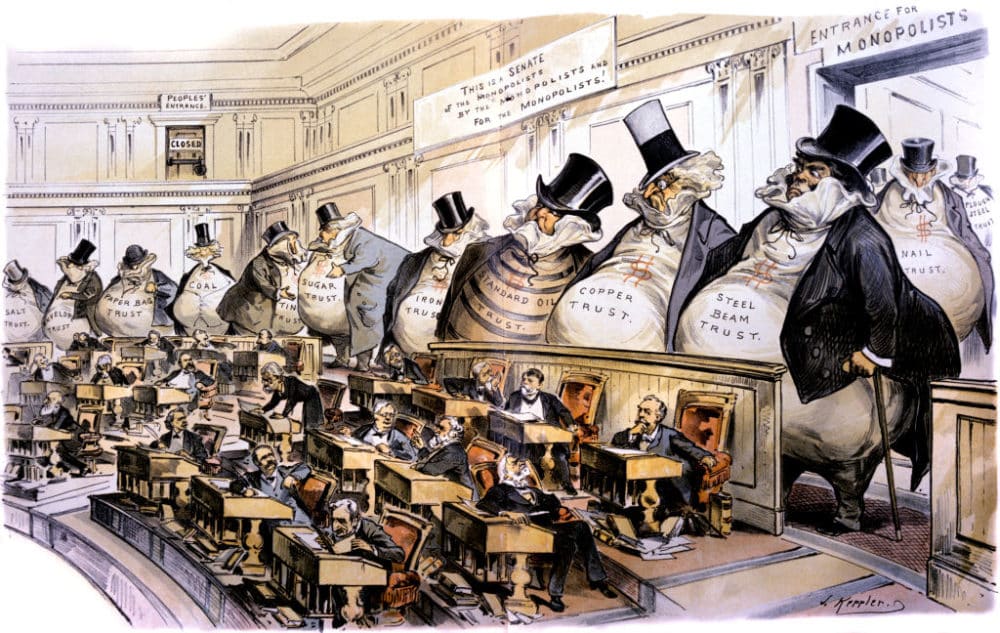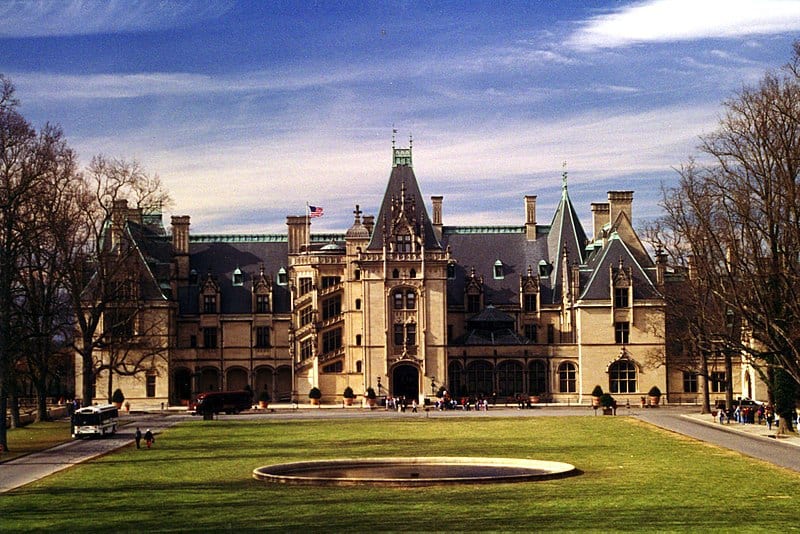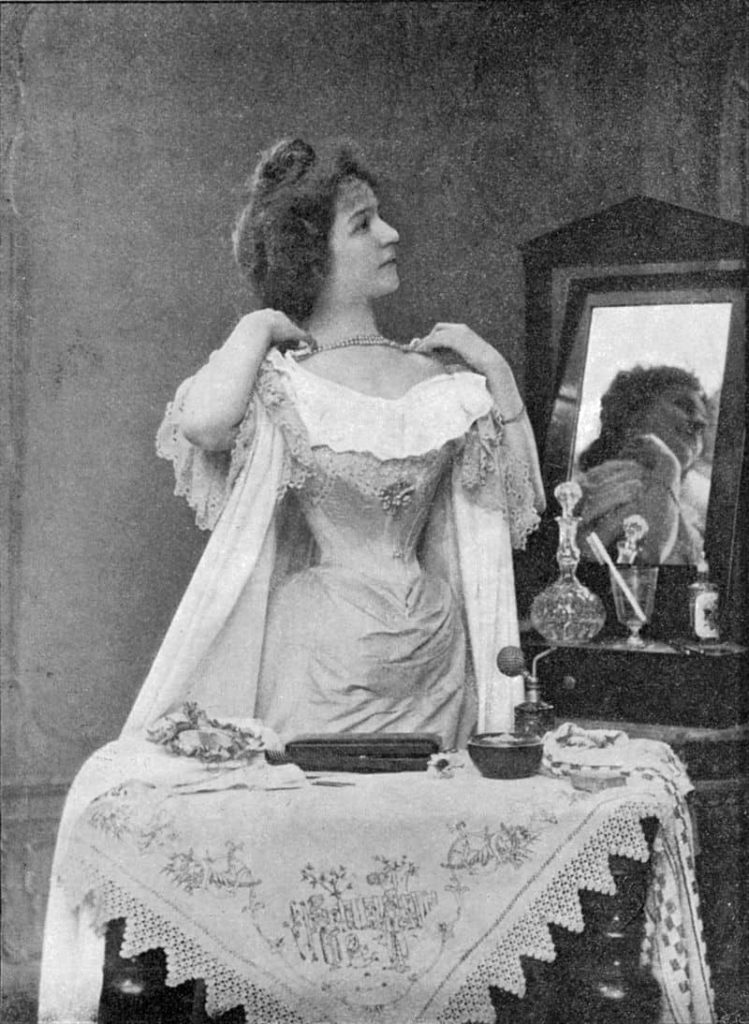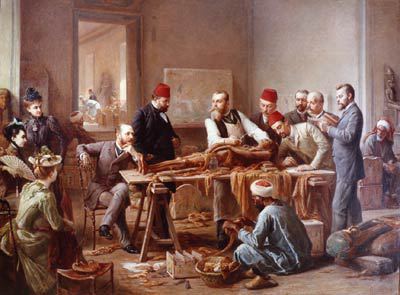Last updated on November 3rd, 2022 at 09:11 pm
The Gilded Age is a period of time defined by quick economic growth, materialism, living in excess, and obvious political corruption in America. It lasted from around the 1870s until the early 1900s and was a time of great wealth disparity between the rich and the poor. New York City was the center of glitz and glamor during this time.
Industrious individuals took advantage of the industrial revolution and became incredibly wealthy. People like J.P. Morgan, Andrew Carnegie, John D. Rockefeller, Cornelius Vanderbilt, and Leland Stanford grew large monopolies in steel, petroleum, and transportation industries.
But it wasn’t all roses. While these people generated and hoarded vast amounts of wealth, it was often at the working class’s expense.
Mark Twain and Charles Dudley Warner coined the phrase ‘The Gilded Age’ in their book The Gilded Age: A Tale of Today, a satirical novel about political corruption and greed in post-Civil War America.
Later, historians adopted the term when discussing this period. During this time, the rich displayed self-indulgent behavior, living their lives to excess with greed and gluttony.
Let’s look at some of the most ridiculous and extraordinary displays of wealth from The Gilded Age.

The Golden Toilet
The rich will add gold to anything–even toilets. In the 1870s, when these new money families blossomed, they wanted to put their stamp on things and be unique. So what could be more memorable than a 24K toilet made of solid gold?
At this time, toilets weren’t a standard in houses. They were considered a luxury on their own, never mind one made of gold.
Most people used outhouses, went outside, or had to share toilets with their street. Getting to use the bathroom in solitude–something we all love now–was a real luxury that only the elite could access.
In Baltimore, a family called the Garretts got rich in the railway industry. So T. Harrison Garrett bought the Evergreen Mansion (now open as a museum and library) and transformed it into a luxurious home for his family.
The library had German porcelain, Japanese ivory, Italian paintings, and floor-to-ceiling walnut bookshelves. But at the very top, he painted the bathtub with gold leaves and got a solid gold toilet.
Visitors can still go to the Evergreen Mansion and see the toilet!
Servants Were Expected to Change The Bedsheets MULTIPLE Times a Day
During The Gilded Age, the wealthy could snap their fingers and get whatever they wanted.
It wasn’t about what you could have at that point. Most just wanted to show off.
Everyone wanted to be better than their friends and neighbors, it had to be newer, more expensive, or you had to be more demanding. Nouveau (new) rich tried to stand up against old money and prove themselves.
Every large mansion or estate had a staff of servants who were expected to be invisible. That often meant using hidden entrances and secret passageways so they wouldn’t be seen in the central avenues of the home. As a result, they could move in and out of rooms without being seen by any guests or the family.
Outlandish orders from this period included changing towels after every use and changing the bedsheets twice a day regardless of whether anyone had used them.
The point was to brag that you had your bedsheets changed so they were fresh every time you slept in the bed, even if it was just for a nap.
People Built Immense Sprawling Estates
The ‘new rich’ built massive mansions during The Gilded Age to compete with the old rich’s massive estates.
One such estate was Biltmore Estate in North Carolina, constructed by George Washington Vanderbilt II between 1889 and 1896 for his family.
The main house was insane 200,000 square feet–over 100 times larger than the average American suburban home.

The entire estate took up eleven square miles, and when it was being built, it was so large that a village was needed to house the workers.
An entire railroad was built to transport the building materials, and the site cost so much to run that the owners had to sell areas of the ground back to the government to keep it running.
Biltmore Estate remains a tourist attraction now and is the biggest private residence in the United States. The Vanderbilt family still owns it and allows people to visit it for a fee.
Designer Dresses and Glittering Jewels
During The Gilded Age, the social season was lined with exclusive parties. Every occasion required a new dress, and the women spent thousands (if not millions) making sure they stood out from the crowd.
One dress, worn by Mrs. Cornelius Vanderbilt II to the 1883 Vanderbilt Ball, was made of satin, velvet and silver bullion and purchased in Paris. It was a visual representation of ‘Electric Light’ to honor Thomas Edison’s newly built New York power station.
A certain area in New York City was dubbed ‘Millionaire’s Row’ where it was said that women paraded up and down the streets wearing millions of dollars worth of dresses and jewels.

There was also a part of Manhattan dubbed ‘Ladies’ Mile, where elite women could browse tightly packed department stores in well-lit streets without taking a chaperone. Ladies Mile was from 14th to 23rd street, between Broadway and 6th Avenue.
However, people didn’t limit themselves to New York City for shopping. Why would you when you could travel the world?
Many women went to Europe and hip places like Paris and Milan to get their intricate jewels and opulent dresses. Everyone was trying to outdo the other.
Tiffany & Co made their mark in New York City with items like platinum, diamond, and seed pearl choker. At the same time, Marcus & Co rose in popularity because of their attention to fine detailing and craftsmanship.
The Only Way To Travel Was Via Private Railway Car
Much like how celebrities and the wealthy travel the world via private jet now, back in The Gilded Age, it was all about the private railway car.
It was the most technologically advanced way to travel while being completely luxurious.
The private railway car was first popularized by P. T. Barnum, who used it for his traveling circus. Soon the robber barons caught on and started using them to travel around the United States.
By 1900 around 2000, private railway cars were being used. Often these had observation decks, full kitchens, office areas, servant’s quarters, and staterooms.
Presidents used private railway cars as part of their campaigns. Prior to Air Force One, the presidential railway car was the primary way for the most important man in the country to get around.
Party Activities Included Mummy Unwrapping
In the Gilded Age, people were always trying to outdo each other to be the party everyone remembered, the people who had the most.
Some of these activities included mummy unwrapping as Egyptomania overtook the western world. In the late 1800s, as discoveries were being made of Ancient Egypt constantly, the craze first took hold in England but soon made its way across the pond to the United States.

Less important mummies were sold off to be unwrapped at parties and were considered very dramatic. Stories were told about the mummies being related to Biblical figures (all lies), and X-Ray machines took images of the guests–before we understood how harmful they were.
Other activities included eating a meal on horseback (while indoors), and one host booked an entire Broadway cast to perform at her party. They really outdid themselves.
Buying A Whole Village Just To Reroute a Train
One of the truly most outlandish things done back in The Gilded Age was when John D. Rockefeller bought an entire village so he could move a train line that was causing smoke over his golf course.
That kind of money and influence is insane when we think about it now, but in 1913, it happened.
At his peak, it was considered Rockefeller controlled 90% of the US’s oil supply, and he has been called the richest American of all time.
He was buying lots of land in Westchester, New York. By 1913 Rockefeller had built a sprawling estate of over 3,400 acres. Making his money in oil, he didn’t have to spare any expense when he spent thousands on a private golf course and filled up his house with sculptures and art.
However, one irksome fact about his new estate was the nearby train line. The Putnam Division tracks were causing acrid smoke on the golf course and making it difficult for the players in between the villages of East View and Briarcliff Manor.
His solution? He bought the entire village of East View and relocated 46 families. To smooth it over with them, he paid them all more than their house was worth and moved the train through the old village instead.
It cost around $700,000, but at least he could tee off without seeing any smoke.
Shipping Butterflies from Brazil for a Ball
Debutante balls are held today in America, but they hold nowhere near the same importance as they did during The Gilded Age.
Then, when a young woman was making her debut, she wanted to be unique, to be remembered. Mary Astor Paul was facing her debutant ball in 1906 in New York City, and she was pondering these very questions.
Her answer was to ship 10,000 butterflies to Brazil, where they would be hidden behind netting that was attached to the ceiling. Then, when she made her debut, the netting would fall and people would be impressed and delighted by the 10,000 butterflies fluttering around.
Except it didn’t quite work out that way.
Instead, the butterflies were on the ceiling, and the lamps were too hot for them. So they all died before they could be revealed, and when the netting fell with a flourish instead, all the limp carcasses fell all over the repulsed guests.
Greed and Gluttony
Another way for the elite of the Gilded Age to show how much wealth they had was to eat it. This was a time when food was not as readily available as it is now. Therefore to grow plump and round was seen as an elite thing. Not like now, when being slender is considered having restraint and looking after yourself.
The wealthy in the Gilded Age could show that they ate whatever they wanted. Being fat meant you could afford to eat. ‘Diamond’ Jim Brady was the perfect embodiment of this gluttony.
He had a never-ending appetite for food and was called ‘the best 25 customers I ever had’ by well-known restauranteur George Rector.
A typical meal for Jim Brady looked like ‘a couple dozen oysters, six crabs, bowls of green turtle soup.’ Followed by ‘two whole ducks, six or seven lobsters, a sirloin steak, two servings of terrapin, and a variety vegetables.’ Finished with ‘several whole pies.’
Food-eating contests flourished during this time as people wanted to prove they could eat the most, and do the most. In a world where their own servants were likely starving.
Extravagant Party Favors
Caroline Astor was known for throwing elaborate and exclusive parties for people who came from ‘old money.’ She had a list of 400 guests and would only invite people she deemed worthy of attending.
The Vanderbilts, being nouveau riche, were shunned from the affair and ended up retaliating by throwing their own costume ball.
Astor’s parties were reportedly dull in comparison with the other extravagant parties held in the Gilded Age. However, the party favors were decadent and opulent, things like leather letter cases, gold pencil cases, and China figurines.

